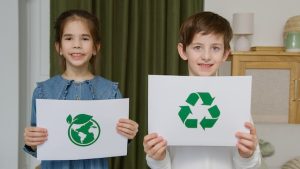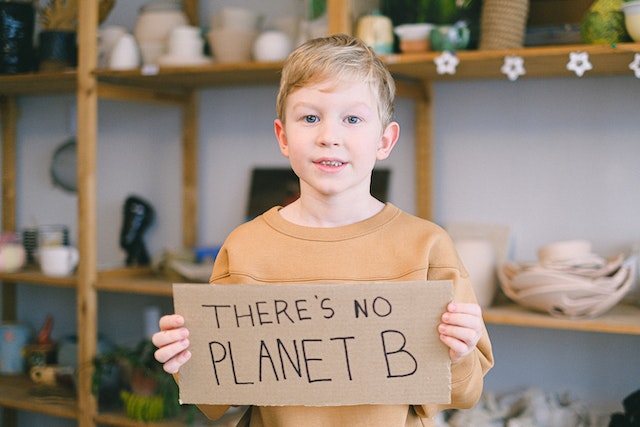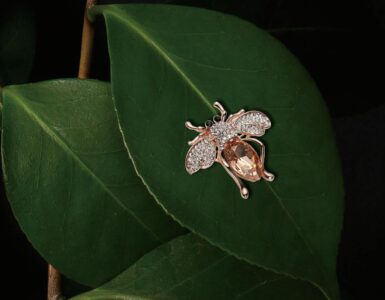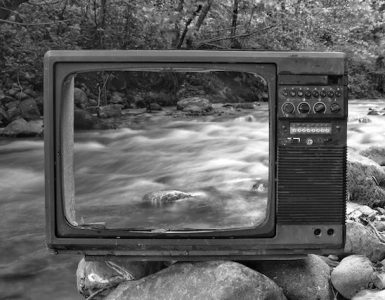As temperatures rise and more extreme effects manifest, it is increasingly getting stressful for many of us.
Imagine the plight of young children, who is the least responsible group for the consequences we are all facing. But the irony is, that they will suffer disastrous outcomes in their lifetime. As per a research, a child born in 2020 will suffer many times more extreme heat waves and other climate disasters over their lifetimes than their grandparents.
If you have a child or you’re thinking about having a child, you are probably concerned about these disasters and the impact they will have on your children’s future. Therefore it is essential that we realize the importance of understanding climate change and also educating our children about it.
Although the subject can be a little overwhelming. The good news is that we don’t have to be scientists to show our children how climate change is happening and how our actions can prevent it as well.
We can do this without complicated jargon but more through our actions, and demonstrations. Here is a list of easy methods to get your child to care about climate change.
The below-mentioned climate change education ideas can be applied to any age group, but are probably more relevant for young children in the age group of 5 to 12 years.
Lead by example
A child’s biggest inspiration is their parents, to make your child care about climate change, it is pertinent that parents and guardians lead by example. Moreover, words lose value if they are not demonstrated with actions.
The examples that you set at your home will go a long way if your child will emulate them not only in immediate future but also in long term. Therefore climate change education is essential not for your awareness but also gives the ability to help your children deal with environmental issues.
Caring for our Food
Right from an early stage, kids should learn not to waste precious commodities like food. Telling them the consequences of wasting food and water will help them understand the need to save them.
Getting food to the dining table involves various actions and high-intensity man-hours. Right from farmers’ inputs to logistics, transportation, and storage, producing food is a heavily carbon-intensive activity. In addition, there are millions of people around the world who go hungry every day.
Therefore preventing food wastage should be one of the highest priority items for parents to make their children care about climate change.
Energy-Saving Habits
Switching off fans, lights, appliances, and other devices when not being used is not only a useful practice for adults but extremely important for children.
If the young child understands the consequences of wasting energy, they would do their best to save. Further, it would be nice if we make our children learn about the basics of power generation, distribution, and transmission. The more they understand the better they will become at ensuring that they keep lights, air conditioners, fans, computers, appliances, etc. turned off when not in use.
Gardening
A few months ago, while on a weekend trip to the countryside, my young niece was charmingly shocked when she saw her Mangoes growing on trees. Her idea of mangoes and any other fruits and vegetables was that it was grown or fetched from supermarkets. Her excitement had no bounds when she discovered that it was trees that produce her favorite fruit.
She might be among many city-bred kids who will not know where their food comes from. Showing children flora and fauna and also making them do certain parts of it will not only help them become aware of biology but they would also appreciate nature.
Through gardening, children can learn about various plants, flowers, pollination, composting, photosynthesis, beneficial insects, etc.
In addition, making your children grow plants in used plastic bottles or old carton boxes would also help them learn aspects of recycling and upcycling.
Volunteering and Group Activities
Volunteering for community events is a great way for children to not only have fun but see the practical impact of their actions. Children get to interact with other children, adults, and group organizers, which helps them improve their knowledge about environmental issues.
Parents can encourage their children to participate in activities like beach cleanups, community cleaning, tree plantation drives, plogging, nature tours, and events related to the environment, among others.
Parents can accompany their children to not only enhance their climate change education levels but also boost their children’s; confidence and enthusiasm.
Fun and Interesting Challenges

Parents can challenge their children individually or with a few of their friends with exercises that are not very complicated but make them learn about climate change.
Here are some interesting activities which can teach children about climate change, the environment, and waste management.
- Collecting plastic waste in a plastic bottle to make bricks that can be used for constructing a dog or cat house.
- An emergency light is made using solar panels or windmills.
- A handicraft made using old household items.
- A flower pot or set of planters using old bottles.
- Growing a plant through composting.
- Listing out every plant, tree, or bird in the neighborhood.
- Making a notepad using the unused/blank side of used papers, that they can use for their drawings, scribbling, etc.
Depending upon their age these challenges can be modified along with adult supervision.
Share stories and Indigenous knowledge
Sharing stories and indigenous knowledge is another important climate change education idea to help our children. Parents and guardians can also narrate fictional or non-fictional environmental stories which give children perspective on different aspects of our nature and biodiversity.
The impact of stories would be even more influential if the stories are inspired by traditional and local knowledge. A story based on Kangaroo will be more relevant for a kid in Australia, similarly, tiger folklore will be exciting for children in Asia.
Holidays to Natural reserves
Based on time and convenience, children can be taken to places where there are mountains, forests, or beaches. While holidays are an occasion for fun and indulgence, the relaxed atmosphere also helps children to learn from the places they travel.
A stay in a hill station will make them understand the importance of mountains, while a visit to woodlands will help them know about the significance of forests and wildlife.
Wrapping Up
The importance of understanding climate change is necessary at all levels and age groups. Children, in particular, lack awareness of this important issue. To create awareness about this issue, it is not sufficient to leave it as part of formal education, parents need to be part of the solution. The above-mentioned climate change education ideas are only a start, as the child explores further, more support is to be provided.
Our kids are some of the most important stakeholders when it comes to protecting our planet. They are the ones that are going to have to deal with climate change one day so it’s important that they understand the issues at hand.
Related Topics
We had earlier written about things that parents can do for their children about climate change. Read here.
Want to know why environment and climate change education is important for children? Read here






Add comment